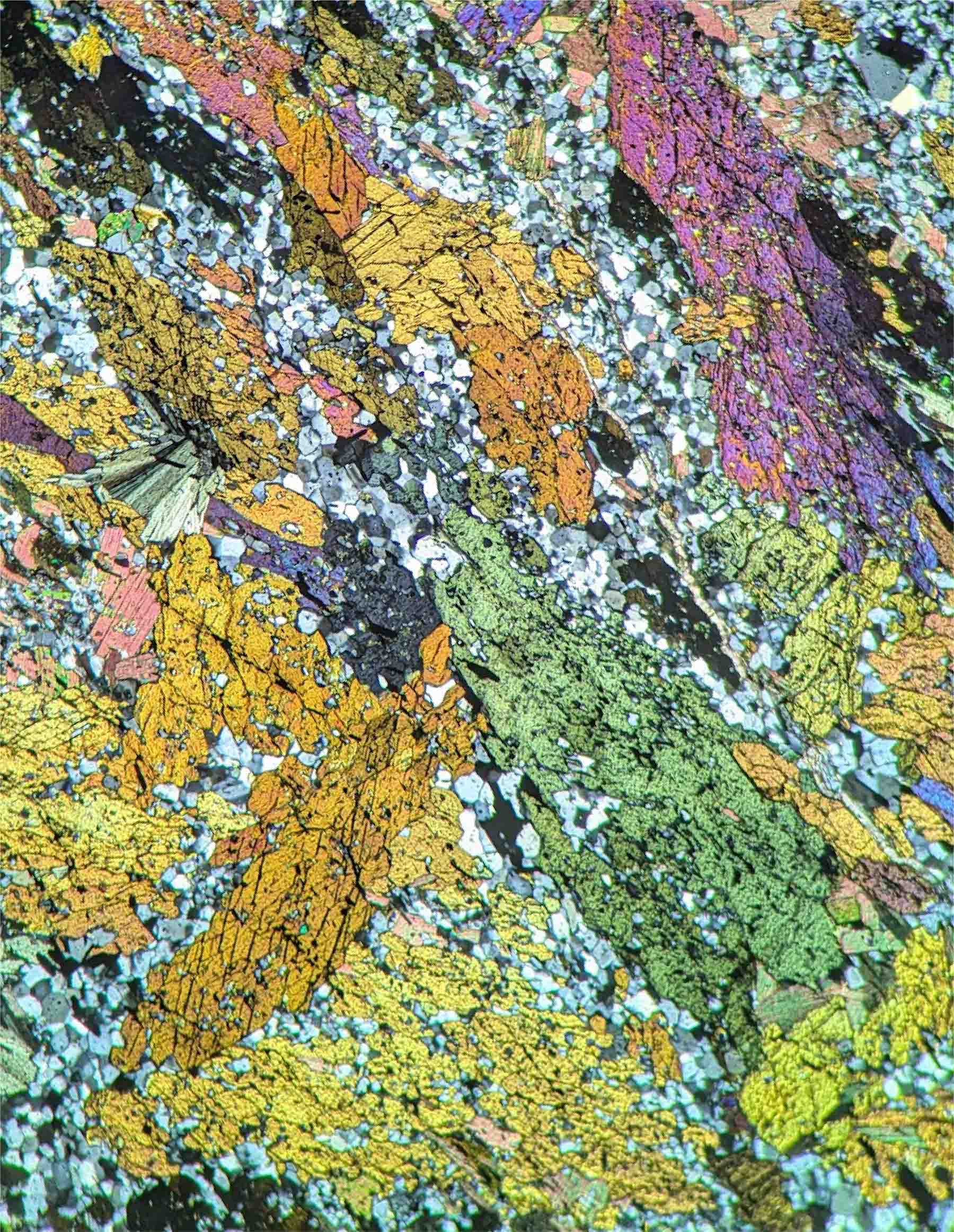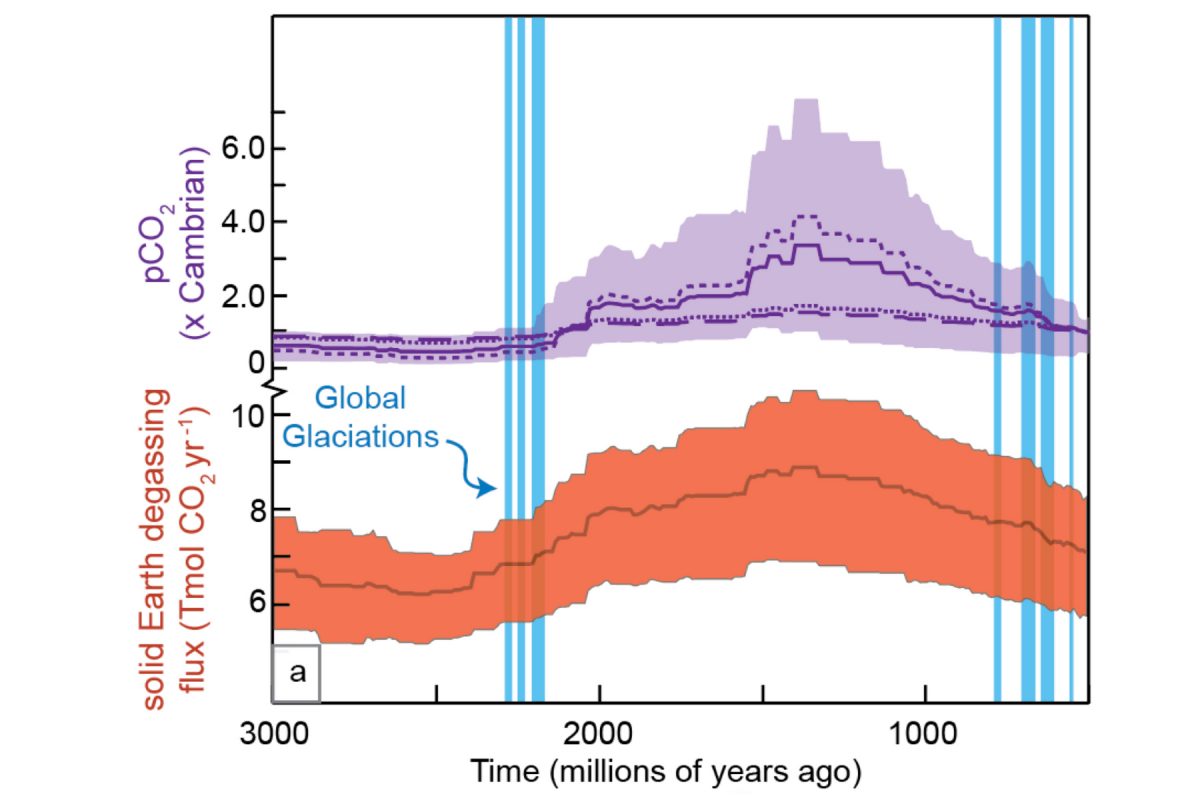Portal to the past: FSU geologist identifies metamorphic rock as a crucial feature of the ancient Earth’s carbon cycle

If Earth’s history were a calendar year, humans would not appear until the last few minutes before midnight on Dec. 31. During the Proterozoic Eon — 2.5 billion years to 543 million years ago — the sun was still a young star, much dimmer than today, and Earth required a stronger greenhouse effect to compensate and maintain habitable temperatures for the planet’s earliest lifeforms.
New research by Florida State University Assistant Professor of Geology, Emily Stewart is challenging long-held assumptions that volcanic activity was responsible for creating the warmth that supported early life on Earth.
Stewart’s work has revealed evidence that carbon dioxide emitted by metamorphic rocks generated the insulating effect necessary for organisms to survive.
“What I love most about geology is that it is a portal to the past. You can look back 300,000 years through archaeology, but Earth is 4.6 billion years old and examining the rock record is the only way we can access most of our planet’s history.”
— Emily Stewart, assistant professor of geology
“Enhanced metamorphic CO2 release on the Proterozoic Earth,” which Stewart coauthored with Donald Penman, assistant professor of geology at Utah State University, was published in September in the Proceedings of the National Academy of Sciences.
“By studying the ways ancient geologic processes modulated temperature in Earth’s past, we can better understand climate sensitivity and predict how geologic processes might function in the context of human-driven climate change,” Stewart said. “Additionally, understanding how carbon is naturally moved in and out of rocks can inform cutting-edge science and help solve engineering challenges presented by accelerating Earth’s carbon regulation processes in order to combat climate change.”
In the atmosphere, carbon dioxide functions like a blanket that insulates the planet — more carbon dioxide knits a thicker blanket. The Proterozoic Eon witnessed the emergence of some of Earth’s earliest life, including small, soft-bodied organisms similar to modern-day jellyfish and worms. Because the sun was dramatically dimmer then, Earth compensated by gradually increasing the amount of atmospheric carbon over millions of years.

Before these findings, scientists believed the gas was sourced primarily from volcanic activity, which began about 3.8 billion years ago, well before the Proterozoic Eon. However, using computer-generated simulations and mathematical modeling, the team discovered that rocks contributed to the Proterozoic greenhouse effect. When Earth’s crust heats and pressurizes carbonate-silicate rocks, the metamorphic process releases carbon dioxide, warming the planet.
Stewart and Penman found that metamorphic carbon dioxide off-gassing — or the release of gas from materials into the air — during the Proterozoic Eon would have yielded an atmospheric carbon concentration four times higher than modern geologic off-gassing rates seen before 1750, in the pre-Industrial Revolution period.
“When a geologist says ‘modern,’ it usually encompasses the last 500 million years of Earth history after the Cambrian explosion of life,” Stewart said. “This paper compares pre-industrial and Proterozoic atmospheric concentrations, but the human-driven carbon flux, or the high rate at which carbon dioxide is being released into the atmosphere today, completely dwarfs all of these geologic questions.”
The atmosphere is only one part of Earth’s larger carbon cycle. The cycle also involves the ocean, plants, animals, rocks and decaying organisms. While the ocean absorbs vast amounts of carbon from the atmosphere, the driving force behind ocean acidification due to climate change, plants use sunlight to convert and store carbon in their tissues. After animals consume plants, they exhale carbon dioxide back into the atmosphere. While rocks may seem fixed and unmalleable in comparison, Stewart and Penman’s research supplies evidence that rocks have historically played a larger role in carbon cycling than originally thought. Today, rocks can function as both a carbon source and sink.


“Many people, including myself, considered metamorphic decarbonation to be a background process in the recycling of carbon,” Penman said. “This research shows that the rate of carbon dioxide off-gassing can change over time, is related to other components of the carbon cycle, and can potentially drive changes in atmospheric carbon in ways not previously considered.”
To test the hypothesis that metamorphic rocks played a larger role in Proterozoic warming than previously believed, Stewart and two of her doctoral students — Kanwa Sengupta and Sayantan Saha — will use a $336,344 National Science Foundation grant to conduct field work along the Central Metasedimentary Belt in Ontario, Canada.
“What I love most about geology is that it is a portal to the past,” Stewart said. “You can look back 300,000 years through archaeology, but Earth is 4.6 billion years old and examining the rock record is the only way we can access most of our planet’s history.”
To learn more about Stewart’s work and research conducted in FSU’s Department of Earth, Ocean and Atmospheric Science, visit eoas.fsu.edu.

